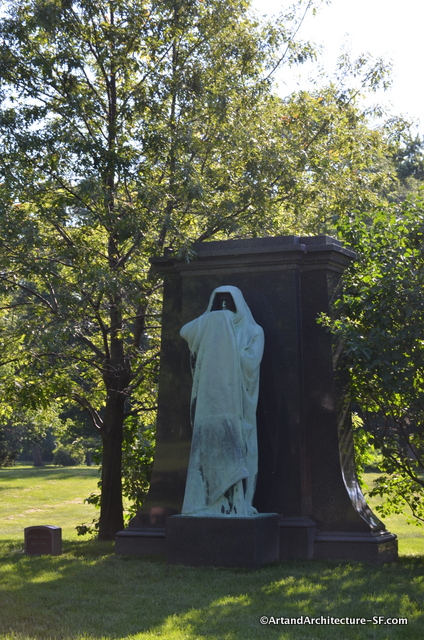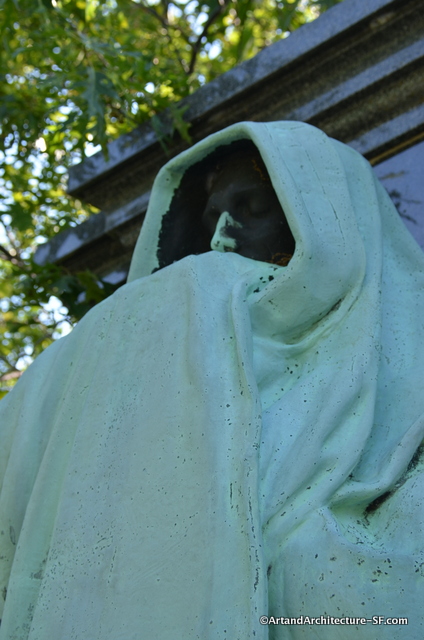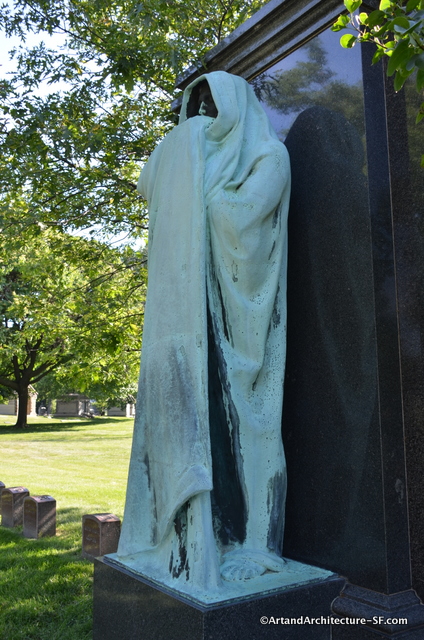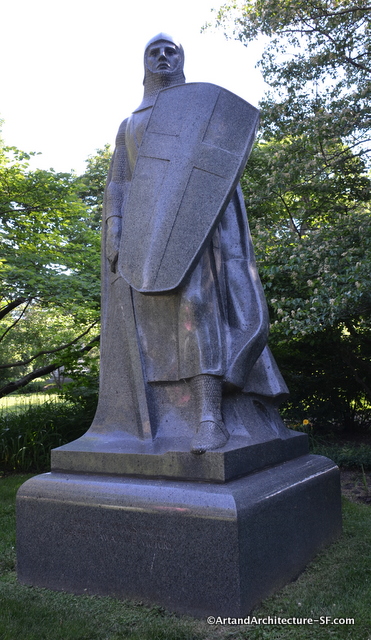 The Eternal Silence, (also called Eternal Silence or Statue of Death) marks the grave of Dexter Graves, who led a group of thirteen families that moved from Ohio to Chicago in 1831, making them some of Chicago’s earliest settlers. Graves died in 1844, seventy-five years before the creation of the statue, and sixteen years before Graceland Cemetery was founded; his body was presumably moved to Graceland from the old City Cemetery. The funds for the monument were provided in the will of his son, Henry, who died in 1907. The will provided $250,000 for a Graves family mausoleum, they received the statue instead.
The Eternal Silence, (also called Eternal Silence or Statue of Death) marks the grave of Dexter Graves, who led a group of thirteen families that moved from Ohio to Chicago in 1831, making them some of Chicago’s earliest settlers. Graves died in 1844, seventy-five years before the creation of the statue, and sixteen years before Graceland Cemetery was founded; his body was presumably moved to Graceland from the old City Cemetery. The funds for the monument were provided in the will of his son, Henry, who died in 1907. The will provided $250,000 for a Graves family mausoleum, they received the statue instead.
 The statue was sculpted by Lorado Taft and cast by a Chicago foundry owned by Jules Bercham.
The statue was sculpted by Lorado Taft and cast by a Chicago foundry owned by Jules Bercham.
The hooded figure was influenced by Taft’s own “ideas on death and silence”. Historically speaking, the figure in Eternal Silence is related to the sculpted funeral procession around the tomb of Philip the Bold in Dijon, France and the Adams Memorial by Augustus Saint-Gaudens in Rock Creek Cemetery in Washington, D.C.

Another grave stone carved by Loredo Taft is The Crusader. This is also in Graceland Cemetery in Chicago

The Crusader is a medieval knight, and is used to symbolize the character of Victor Lawson, publisher of the Chicago Daily News. Standing over thirteen feet tall, it was carved out of a solid block of highly polished dark granite supplied by the Henry C. Smalley Granite Company of Quincy, Massachusetts. The knight, with a large sword and shield, was an image that Taft had contemplated for years; he used it in numerous works besides The Crusader.
Unlike Taft’s earlier work, The Crusader emphasizes its “sheer mass”. While there is no name on the grave stone there is an inscription: “Above all things truth beareth away victory”, a quote from 1 Esdras 3:12.